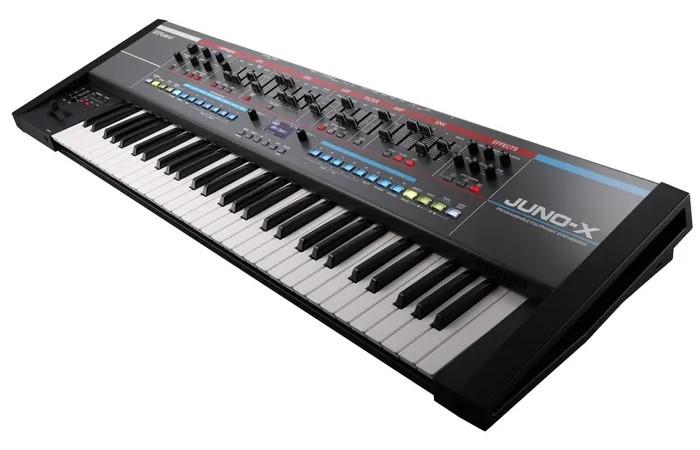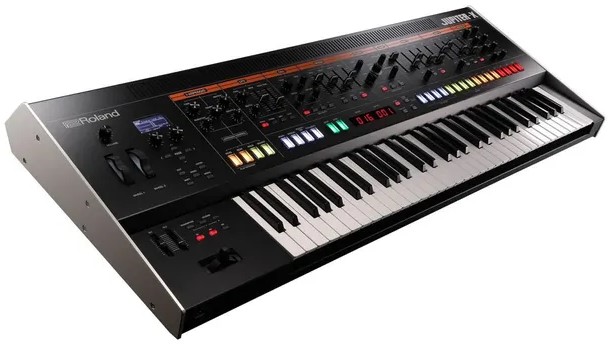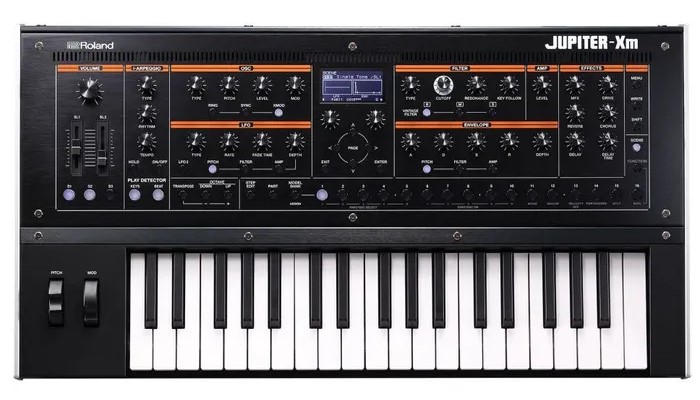Take a deep dive into the JUNO X and JUPITER X from Roland as we explore all of the features and differences between each synth to find the right one for you
In this blog we’ll be comparing a couple of awesome Roland Synths and helping you to decide which one would be best for you.
The JUNO X and JUPITER X synthesizers share many similarities, but they have some key differences that mean you may prefer one over the other.
Keep reading to find out the differences between the JUNO X and JUPITER X, and get to grips with why they’d be an awesome addition to any studio, production, or live synth set-up.
JUNO X vs JUPITER X
The JUNO X synthesizer builds upon the legacy of two iconic Roland keyboards - the unforgettable JUNO-60 and JUNO-106 synthesizers. These synths can be heard on countless songs from over the years, and the new JUNO X brings these classic sounds into the 21st Century with some modern appointments.

The Roland JUPITER name is synonymous with the peak heights of sound design and reliability. Ever since the 1978 release of the JUPITER 4, this synth line has been revered by all of those lucky enough to have played one.
With the JUPITER X, you’re treated to the same classic Roland JUPITER design and build quality, with an all-new synth engine that's more powerful than anything to come before it

Here, we’ll be digging into the similarities and differences between JUNO X and JUPITER X - starting with the keyboard..
Keyboard
Each of the JUNO X and JUPITER X have 61 keys - a 5 octave range which will feel comfortable to those familiar with Roland synths.
Both of the synths have Channel Aftertouch capabilities, however the difference between them is that whilst the JUPITER X has semi-weighted keys, the JUNO X does not.
Sound Generator
Both of these synthesizers rely on a ZEN-Core synthesis system, but each has a differing set of pre-loaded models.
On the JUPITER X you can find the following models:
- JUPITER-8
- JUNO-106
- JX-8P
- SH-101
- XV-5080
- RD-Piano
- Vocoder
On the other hand, the JUNO X has these models pre-loaded:
- JUNO-X
- JUNO-60
- JUNO-106
- XV-5080
- RD-Piano
- Vocoder
The synths share the XV-5080, RD-Piano, and Vocoder models, but most importantly they also share a JUNO-106 model.
Whilst the JUNO X also adds a JUNO-60 and new JUNO X model, with the JUPITER X you’ll have the JUPITER-8, JX-8P, and SH-101 models that aren’t available on the JUNO X.
Controllers
When it comes to your synth workflow, knowing what controllers are at your disposal is of particular importance.
Both of these synths give you a Pitch Bend/Modulation Lever, along with 2 x Sliders and 3 x Switches as assignable controllers.
The difference in the controllers comes down to the inclusion of two Wheels on the JUPITER X that you won’t find on the JUNO X.
Bluetooth
Good news!
Each of the JUNO X and JUPITER X are compatible with Bluetooth for both Audio and MIDI.
This means that the synths are future-proofed, giving you the comprehensive modern synthesis experience that you’d expect from innovators like Roland.
Speaker, Display, Power Supply & Size..
If you’re looking for synths with built-in speakers, then you’ll be pleased to hear that each of the JUNO X and JUPITER X have full-range stereo speakers in addition to a stereo tweeter.
They both utilise a 128 x 64 dot Graphic LCD Display, as well as a standard AC Input Power Supply.
One big difference between the JUNO X and JUPITER X is in the size and weight, which might be important if you’re looking for a synth to use live.
The JUNO X weighs in at 11.6kg (25lbs10oz), compared to the JUPITER X which weighs 16.9kg (37lbs5oz).
For the full height, width, and depth dimensions, check below:
JUNO X Dimensions
1,072 (W) x 333 (D) x 110 (H) mm
or
42-1/4 (W) x 13-1/8 (D) x 4-11/16 (H) inches
JUPITER X Dimensions
1,090 (W) x 447 (D) x 119 (H) mm
or
42-15/16 (W) x 17-5/8 (D) x 4-11/16 (H) inches
Which Roland Synth is Right for Me?
As we’ve said before, each of these synthesizers would be a worthy addition to any keyboard set-up - no matter if you’re using them in a studio, for home recording, or in the live arena.
The main differences between the JUNO X and JUPITER X are:
- The JUPITER X has semi-weighted keys, whilst the JUNO X does not
- Each synth has a unique set of pre-loaded models - scroll up to see them!
- The JUPITER X has two control wheels that you won’t find on the JUNO X
- The JUNO X is lighter and smaller
If you’re after the classic JUNO sound in particular, then the JUNO X is your best bet. If you’re after something with a little more versatility, the JUPITER X does have access to a pre-loaded JUNO-106 model, in addition to some other unique models.
You’ll also get a little extra control out of the JUPITER X, however this makes it heavier and larger compared to the JUNO X despite sharing the same 61-key set-up.
If you’re looking for the best of both worlds, then another option is the JUPITER Xm - a compact, 37-key version of the JUPITER that provides the same ZEN-Core engine but in a smaller package.

You can find out more about the JUPITER Xm here:
Whichever keyboard you choose, you’ll be set for life with an infinitely musical, highly-reliable piece of kit that should inspire you to make as much music as possible!
Still got some questions about Roland? Need to find the Best Synth on a Budget? Call us on 0151 448 2089 or check out your local store to speak to one of our Experts about your needs.

